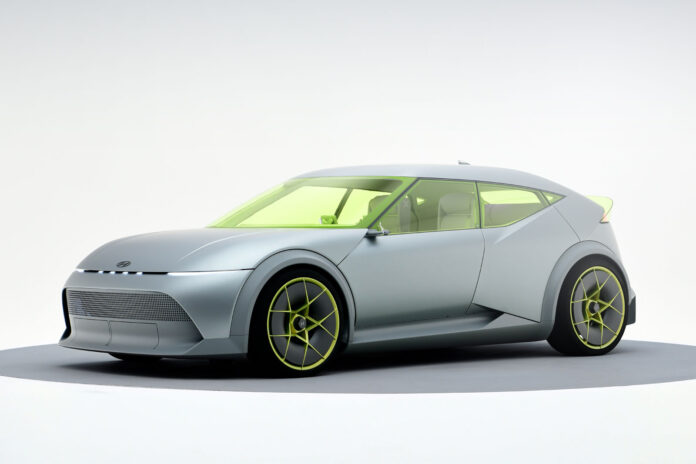Loasby said the production car wouldn’t quite be as wide or as low as the 1968mm-wide and 1465mm-tall Concept Three, but its “fundamentals” would all remain.
The headlights will remain slim (although not hidden as much as those on the concept) and the pixel graphics will remain as one of a limited number of visual links with the other Ioniq models.
The concept’s gullwing doors will also give way for production, with Loasby saying they were there to better showcase the interior.
The interior is even more radical than the exterior, but it still has links to the production car. Material use and design have been applied with a ‘Furnished Space’ mantra in an effort to sculpt and trim surfaces as if in a living room.
Both the Art of Steel and Furnished Space themes were part of Hyundai trying to treat materials “in a more natural way”, said Loasby.
There is also a new approach to the HMI multimedia interface, with an increased number of buttons near the driver to help keep their eyes on the road more of the time.
In a continuation of this theme, the driver display is also moved above the steering wheel and therefore closer to the driver’s eyeline.
